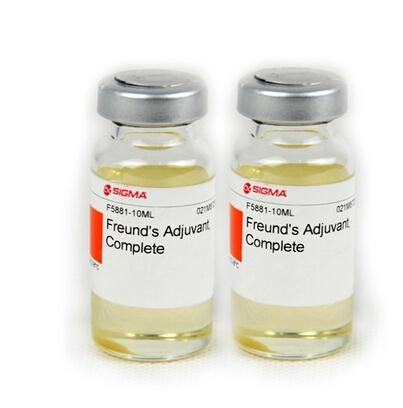L14 Pathogenicity and Infection
一、Overview of Pathogen
Pathogen
primary (frank) pathogen 原生病原体 - causes disease by direct interaction with healthy host (e.g., HIV)
opportunistic pathogen 机会性感染,伺机性感染 - may be part of normal flora and causes disease when it has gained access to other tissue sites or host is immunocompromised, (e.g., Pseudomonas aeruginosa)
animate 有生命的 (humans or animals)
inanimate (water, soil, food)
The Chain of Infection
Chain of events for a successful infection
- agent identity
- virulence(毒力,病毒性) of agent
- dose of agent
- means of exposure to agent
- susceptibility of host to agent
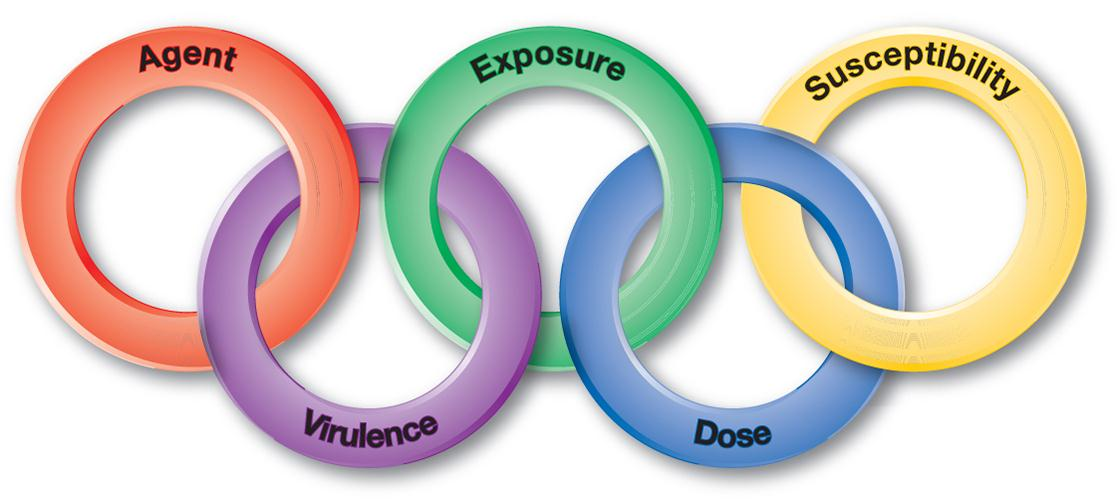
Course of Infectious Disease
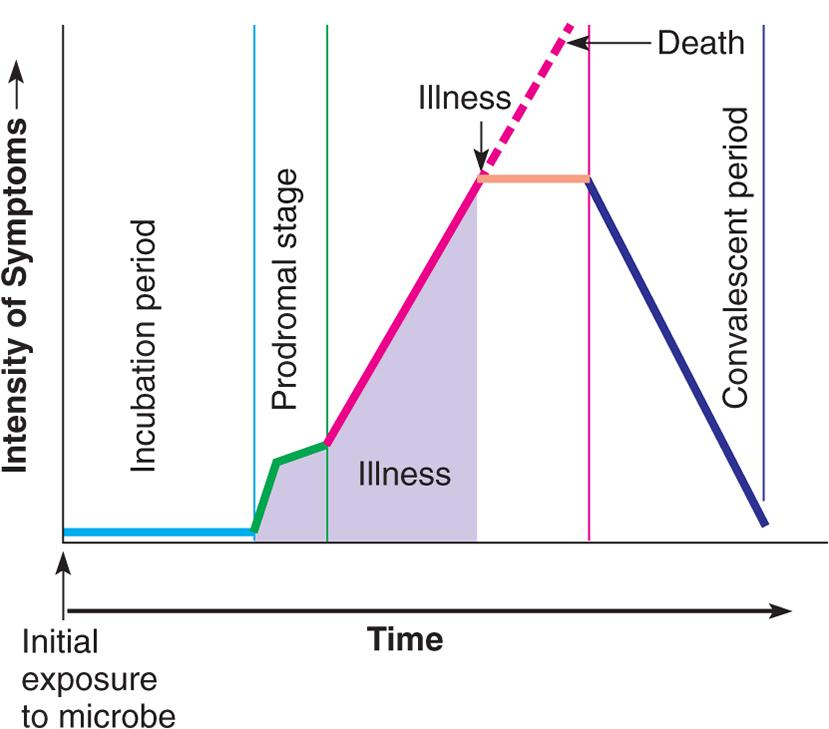
incubation period 疾病潜伏期
疾病潜伏期是接触病原体(可以是微生物或者是化学制剂、辐射等)后,症状和体征有明显的表现前所经过的时间。疾病潜伏期可能短至只有几分钟,或者长达几十年(克雅氏病大概为30年)。潜伏期内的传染病同样具有传染性
prodromal stage 前驱期
period of illness 疾病时期
convalescence 康复;恢复期
Infectious Dose
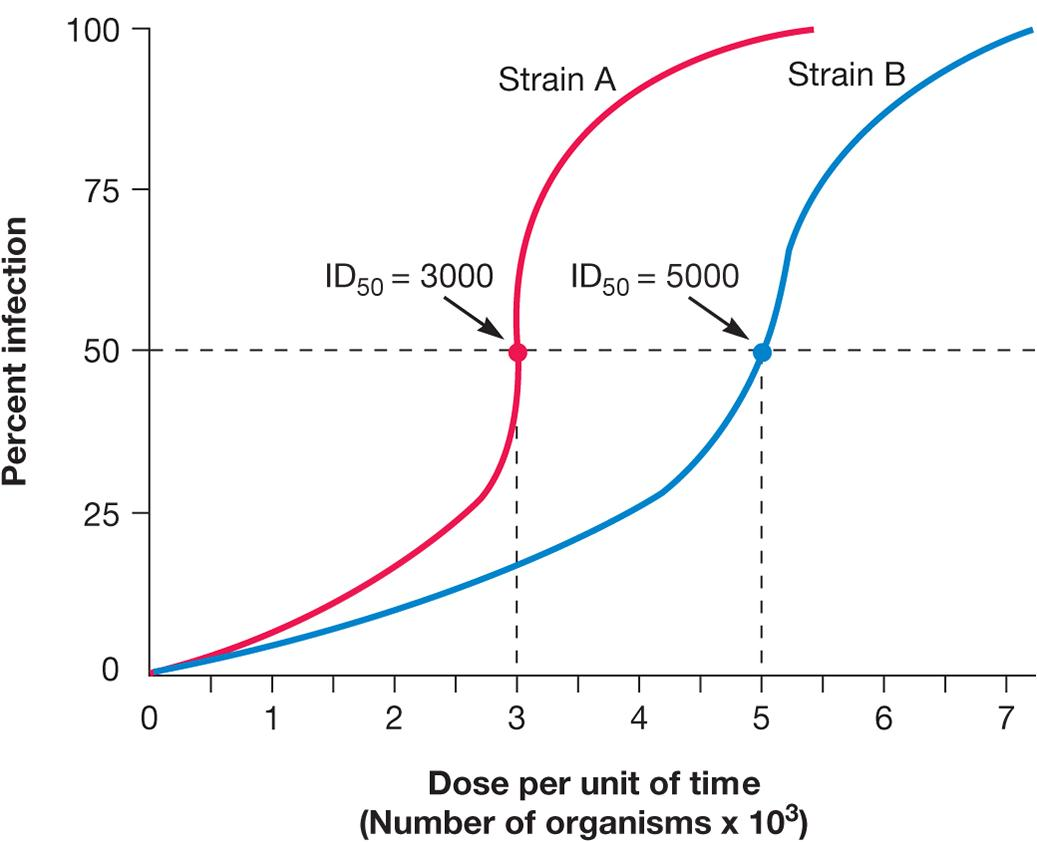
Infectious dose 50 ($ID_{50}$)
- number of pathogens that will infect 50% of an experimental group of hosts in a specified time
Lethal dose 50 ($LD_{50}$)
二、Virulence
Virulence Factors 毒力因子
Determined by characteristics of the pathogen
- adherence and colonization
- invasion
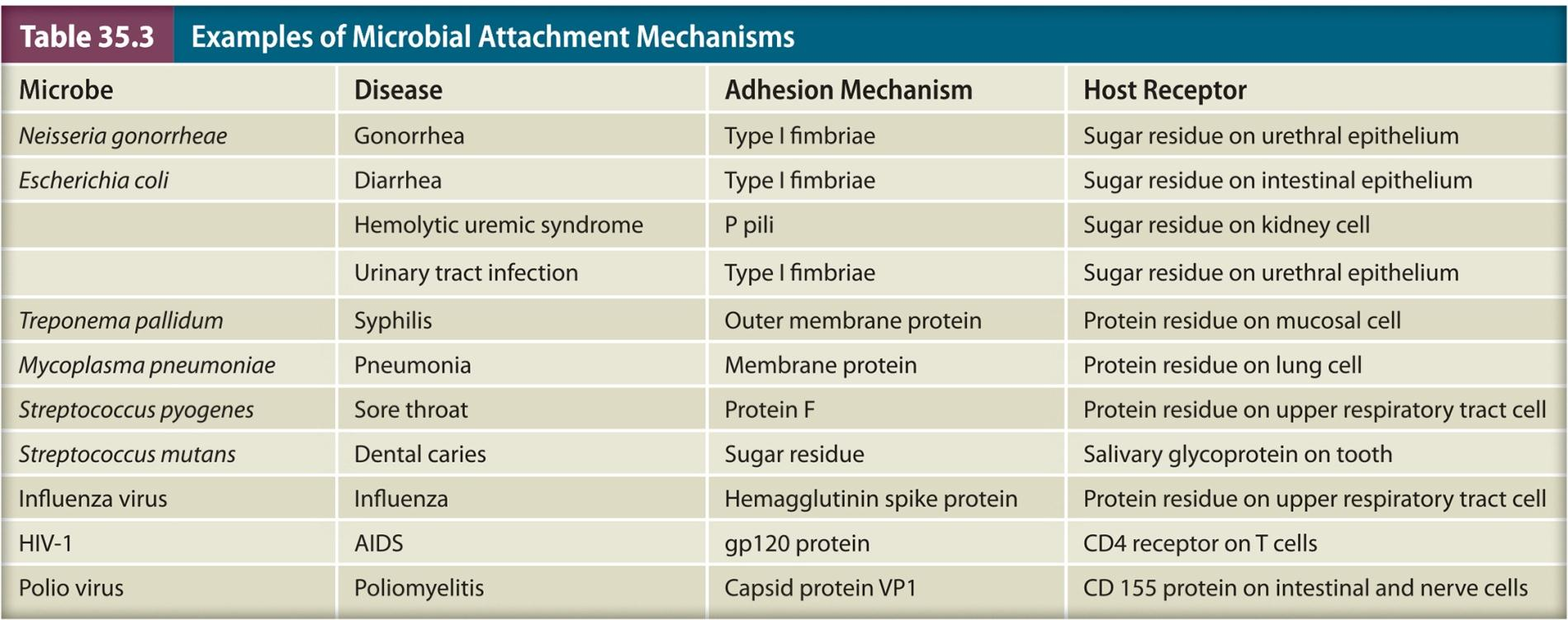
1. Microbial Adherence Mechanisms
- Fimbriae 菌毛
- Capsules
- Spikes
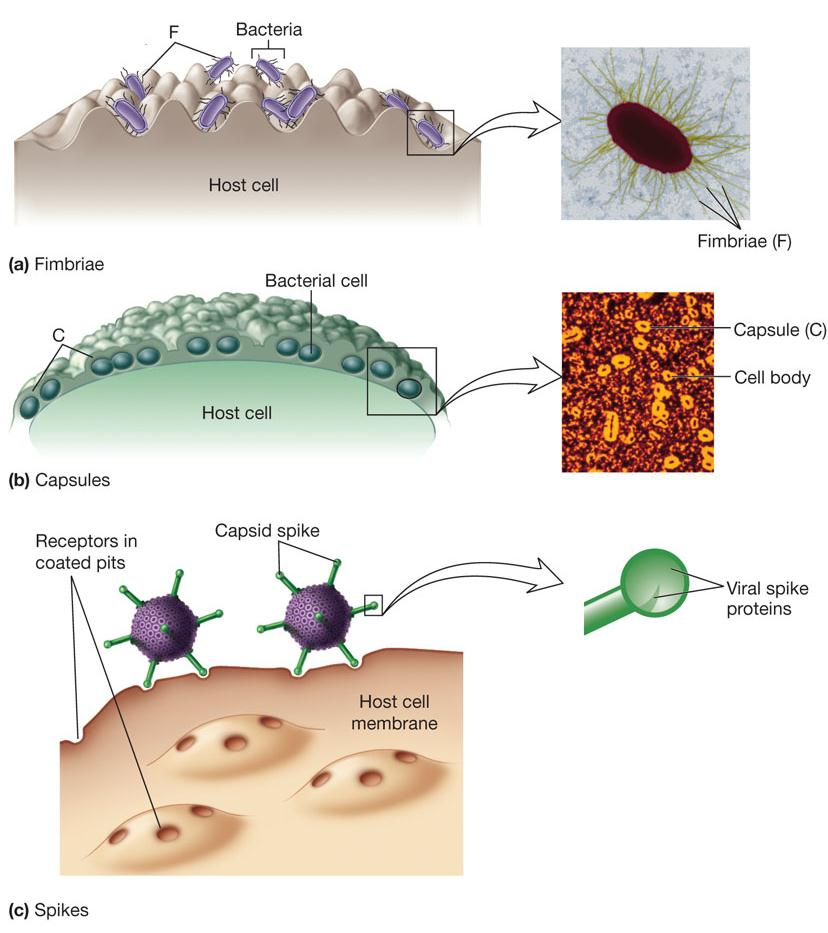
2. Pathogenicity Islands 致病岛、致病性基因岛
Major virulence factors on large segments on chromosomal or plasmid DNA
- increase bacterial virulence
- absent in nonpathogenic members
- can be transferred to other bacteria
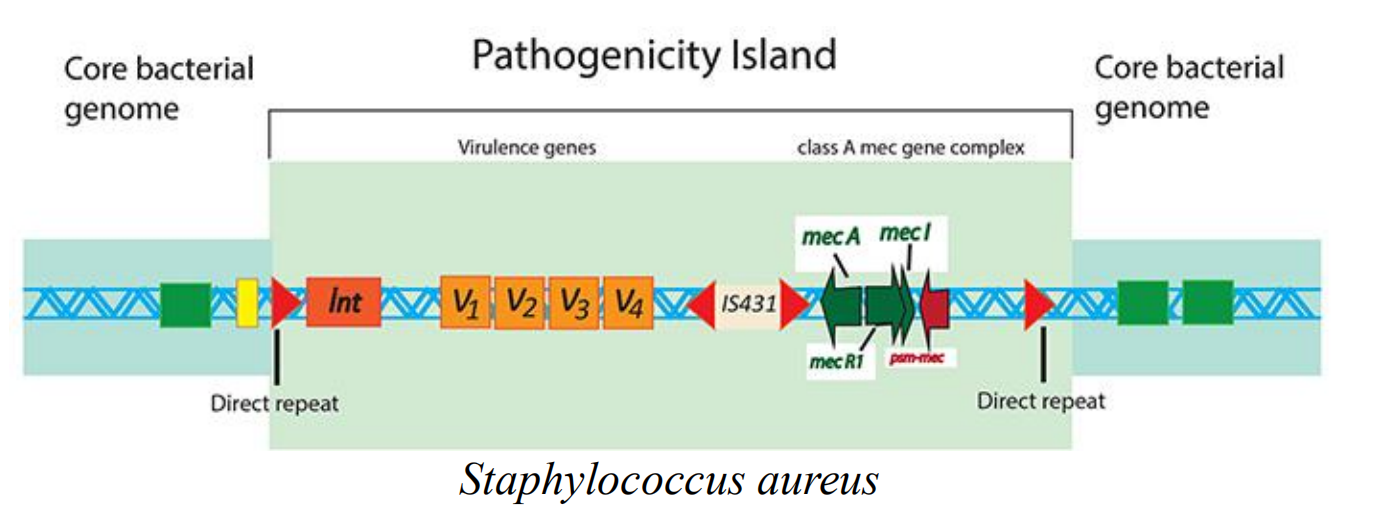
Invasion
Penetration can be active or passive
active occurs through lytic substances which
- attack the extracellular matrix and basement membranes
- degrade carbohydrate-protein complexes between cells
- disrupt host cell surface
passive (e.g., skin lesions 皮损 , insect bites, wounds)
- involves production of specific products and/or
- enzymes that promote spreading
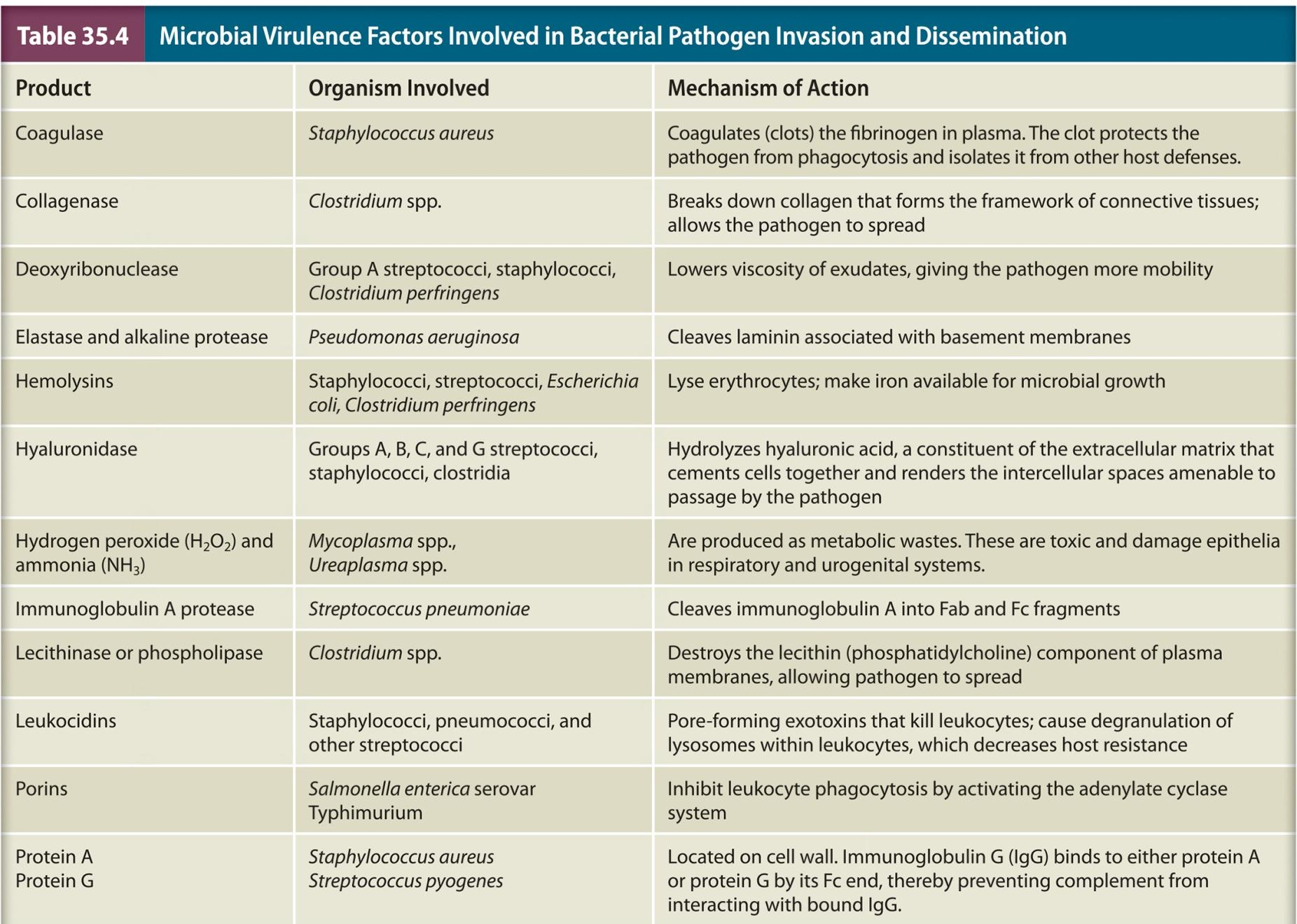
1. Exotoxins
AB exotoxins
composed of two subunits
- A subunit 一 responsible for toxic effect
- B subunit 一 binds to specific target cell
Membrane-disrupting exotoxins
Superantigens
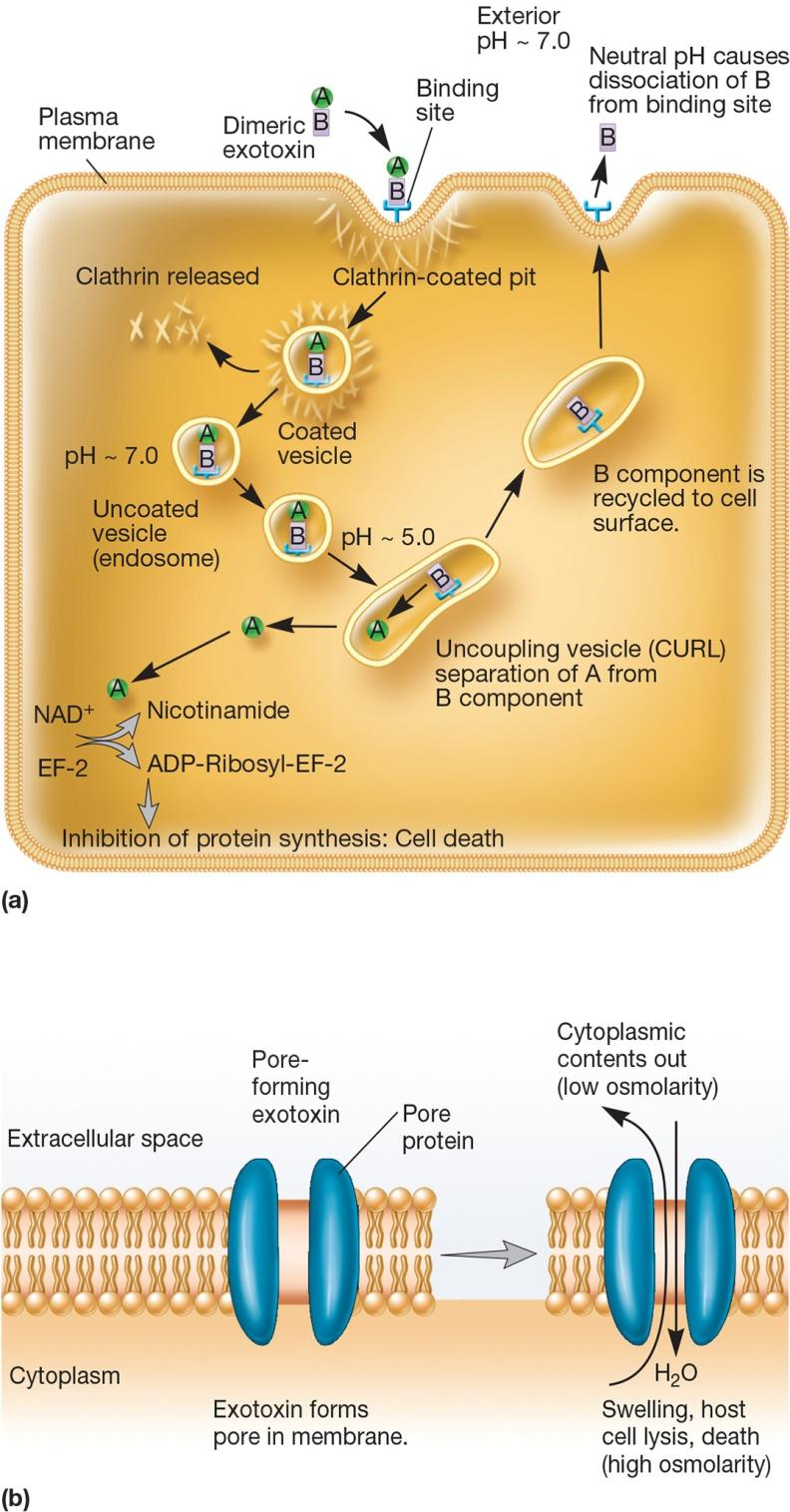
Superantigens
Stimulate -30% of T cells of the immune system
causes the T cells to overexpress and release cytokines
results in failure of multiple host organs allowing time for the microbe to disseminate
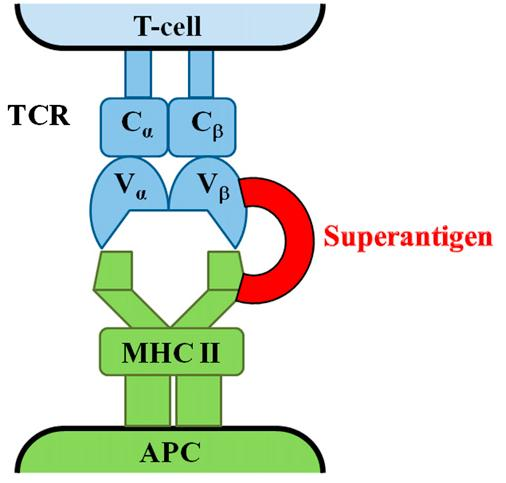
Lipopolysaccharide (LPS) in Gram-negative cell wall
endogenous (part) of the bacterium and released when organism lyses
toxic component is the lipid portion, lipid A

Characteristics
- Heat stable
- Toxic (nanogram amounts)
- Weakly immunogenic 弱免疫原性
- Generally similar, despite source
- Cause general system effects
- fever, weakness, diarrhea, inflammation, intestinal hemorrhage, and fibrinolysis
3. Mycotoxins 霉菌毒素
Secondary metabolites of fungi
common contaminants of food crops
Aspergillus flavus produce carcinogenic aflatoxin
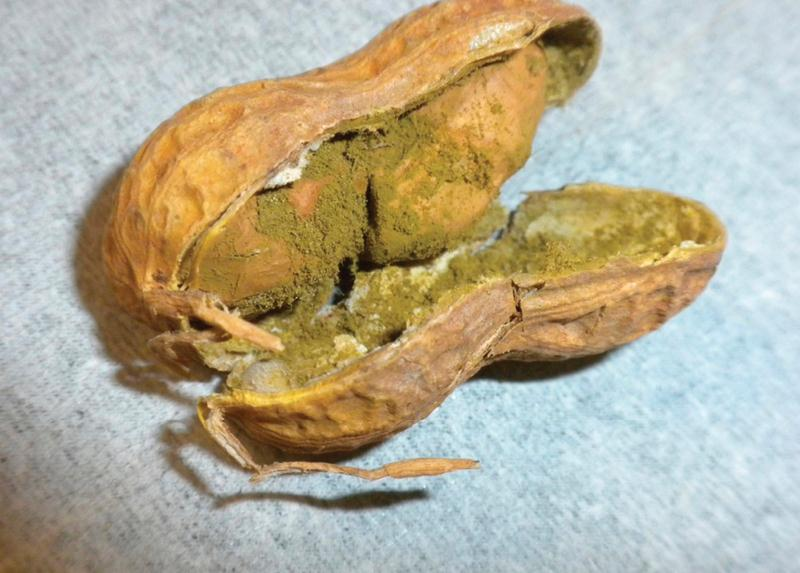
4. Biofilm
Biofilm growth
become less sensitive to antibiotics
increases virulence
make cells in biofilm more resistant to host defense
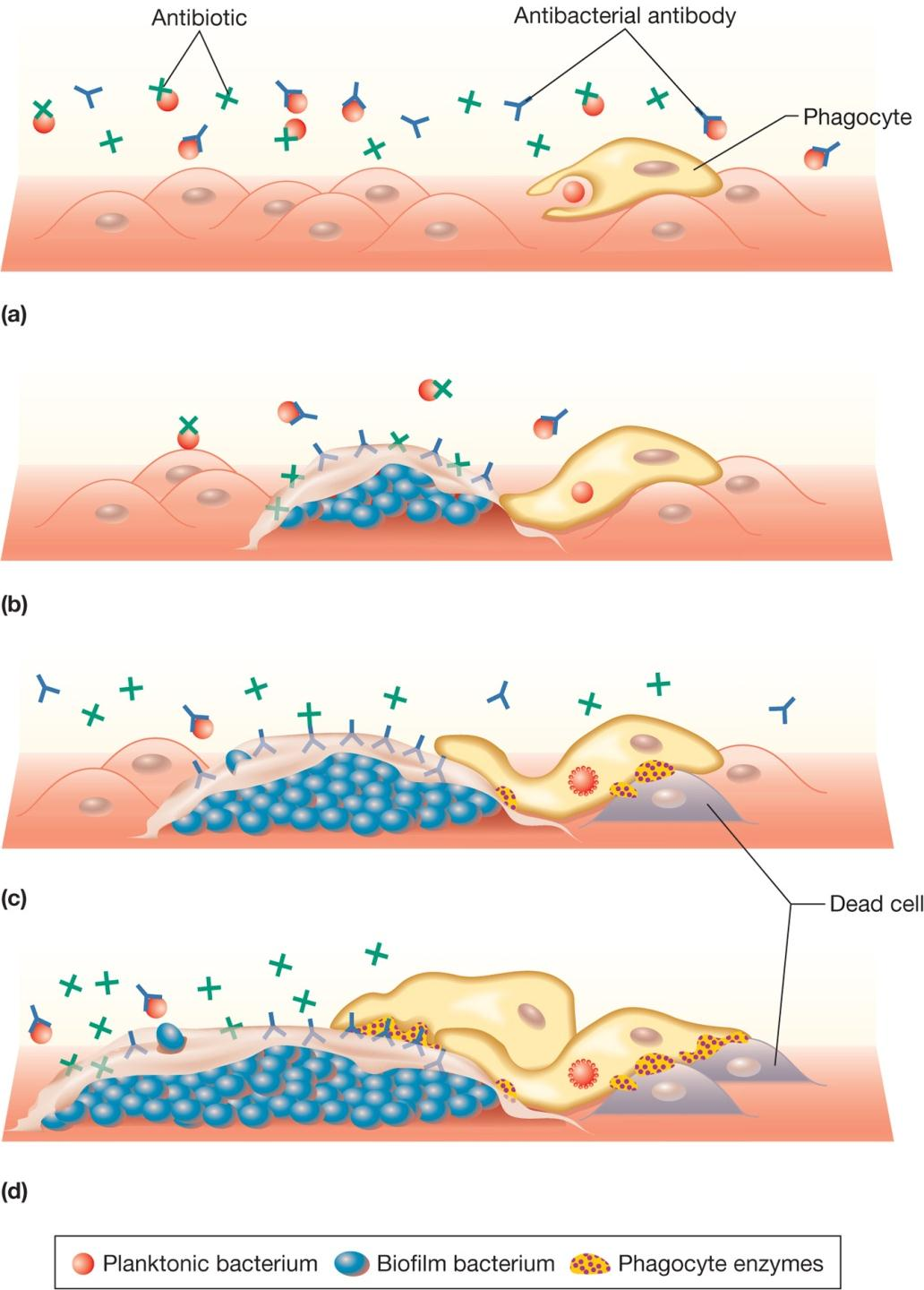
Resisting Host Defenses
Infection of immune system cells
Fuse with adjacent cells to prevent exposure to antimicrobial proteins in host
Capsules prevent phagocytosis
Mutations change antigenic sites or alter expression of antigens
Produce substances that resemble host tissue
Produce proteases that degrade host proteins
Special proteins that interfere with host defenses
Pathogen Transmission
Initial transmission of pathogen to host
- evidence suggests correlation between mode of transmission and degree of virulence
- direct contact → less virulent
- vector-borne → highly virulent
- greater ability to survive outside host → more virulent
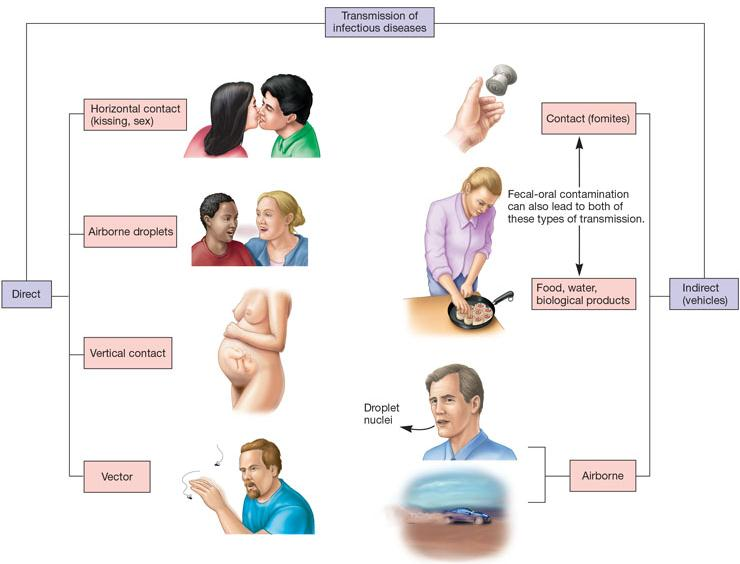
Transmission of infectious diseases
- Direct
- Horizontal contact (Kissing, sex)
- Airborne droplets
- Vertical contact
- Vector
- Indirect (vehicles)
- Contact (fomites)
- Food, water, biological products
- Airborne
三、Clinical Microbiology and Immunology
Identification of Patient Specimen
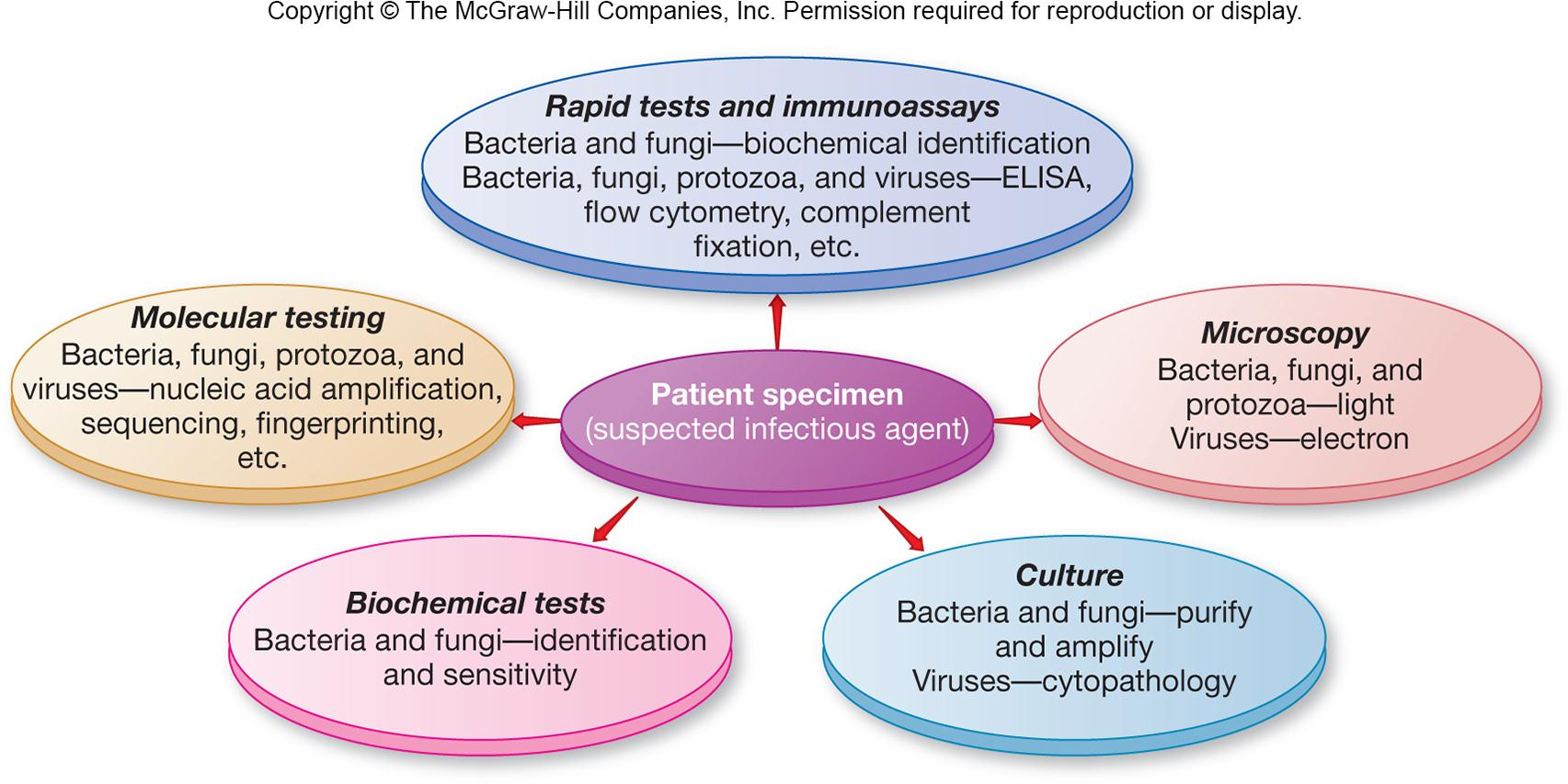
1. Biosafety: Working with Specimens
Safety concerns
Standard Microbiological Practices have been established by the Centers for Disease Control and Prevention (CDC)
Specimen should:
- represent diseased area and other appropriate sites
- be large enough for carrying out a variety of diagnostic tests
- be collected in a manner that avoids contamination
- be forwarded promptly to clinical lab
- be obtained prior to administration of antimicrobial agents, if possible
2. Microbiology Risk Groups
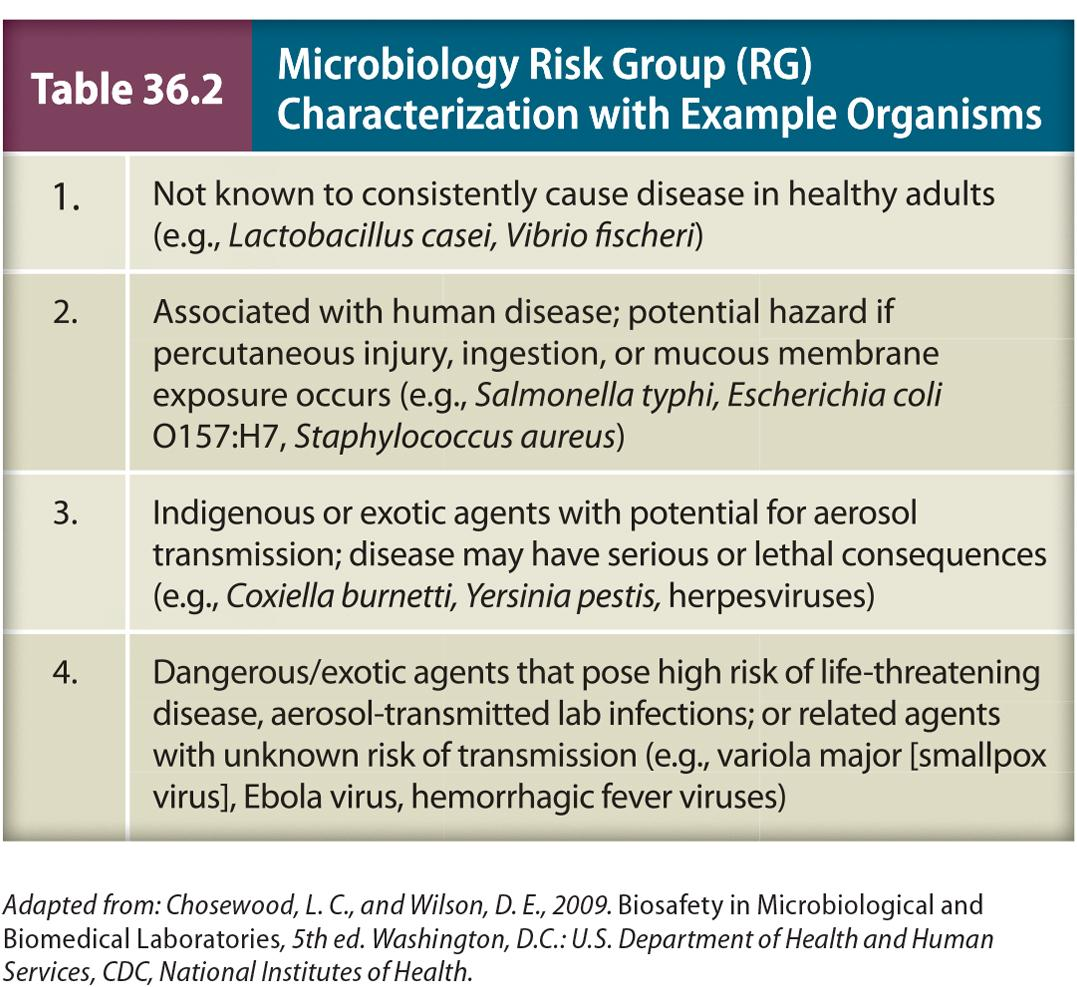
3. Biosafety Levels (BSLs)
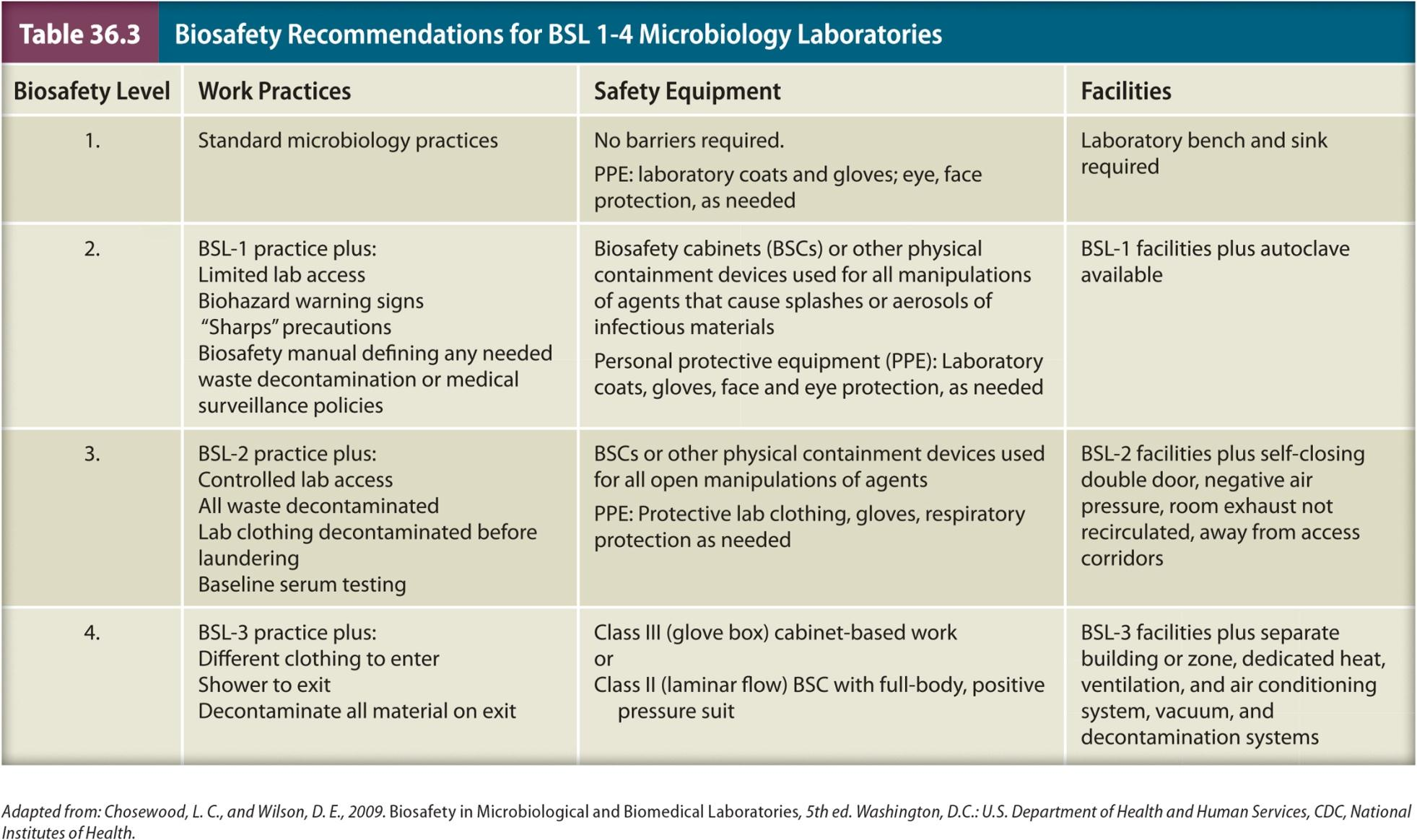
4. Identification Methods
Diagnostic procedures
direct identification methods
- growth and biochemical characteristics
- microscopy
- molecular methods
- bacteriophage typing
- immunologic tests
indirect identification methods
serology 血清学
immunofluorescence 免疫荧光
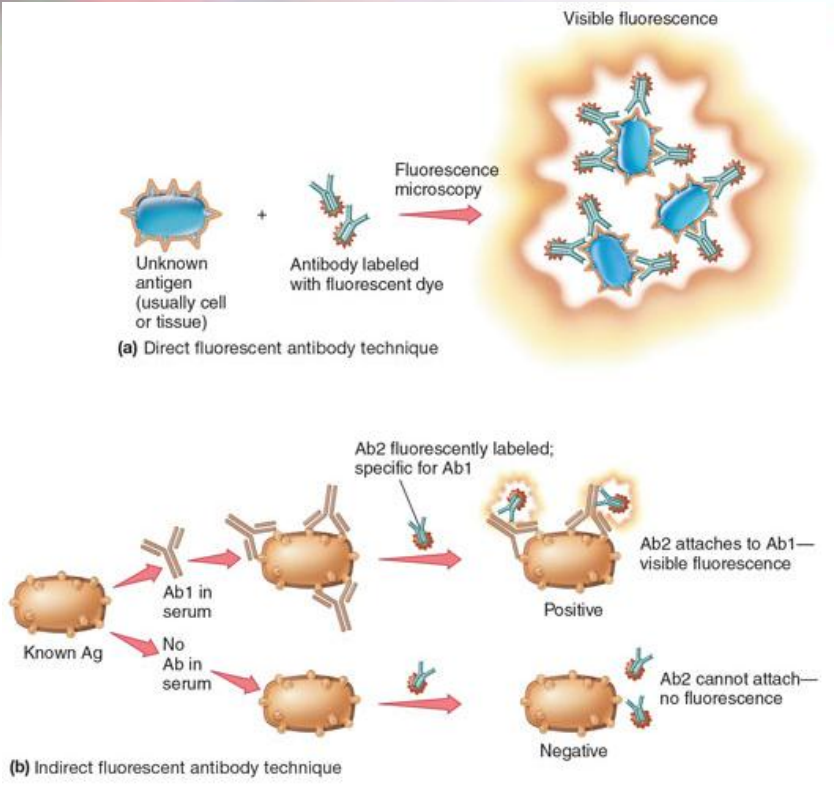
免疫荧光染色的简单过程
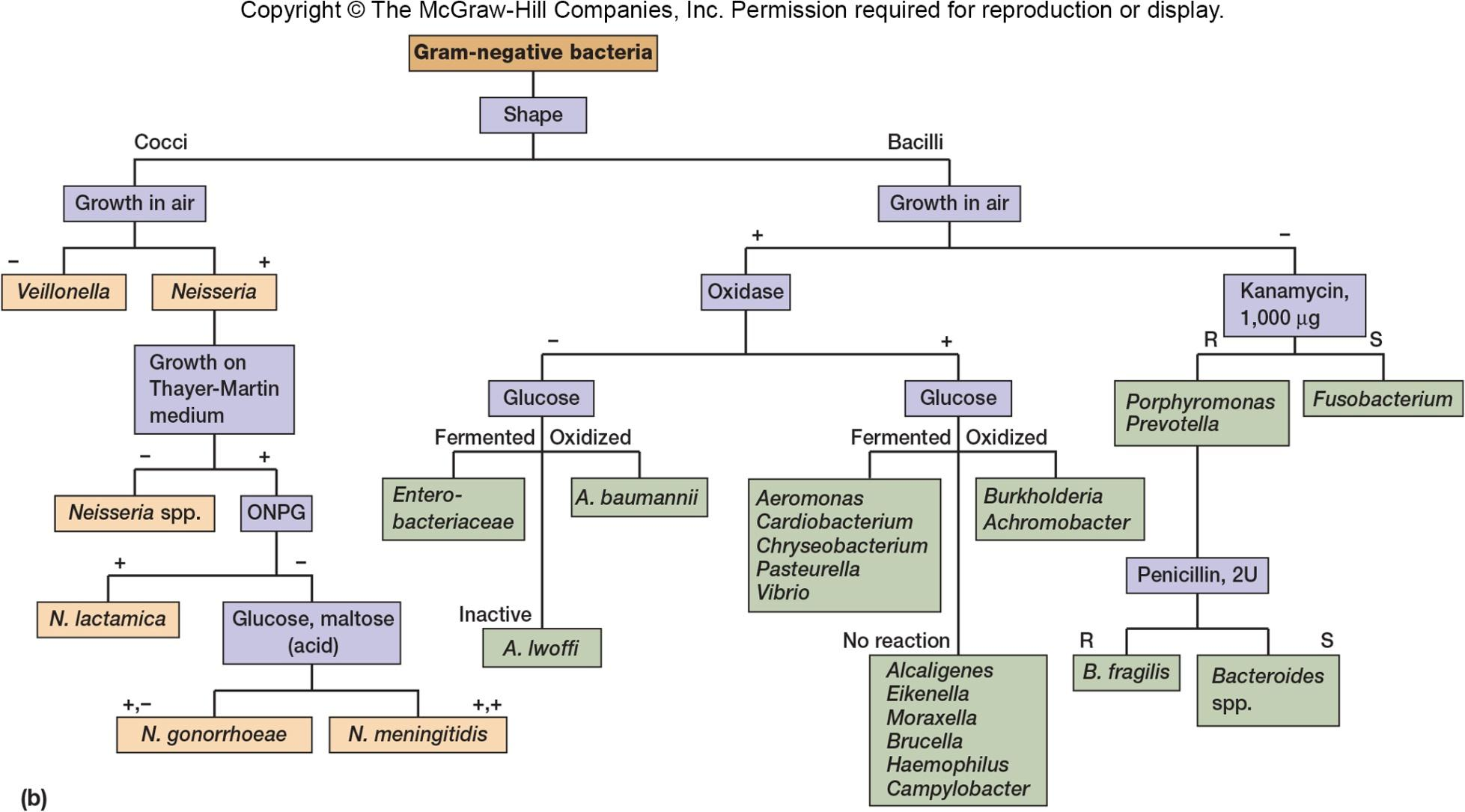
Rapid Methods of Identification
Manual biochemical systems
- e.g., API 20 E system
Automated systems
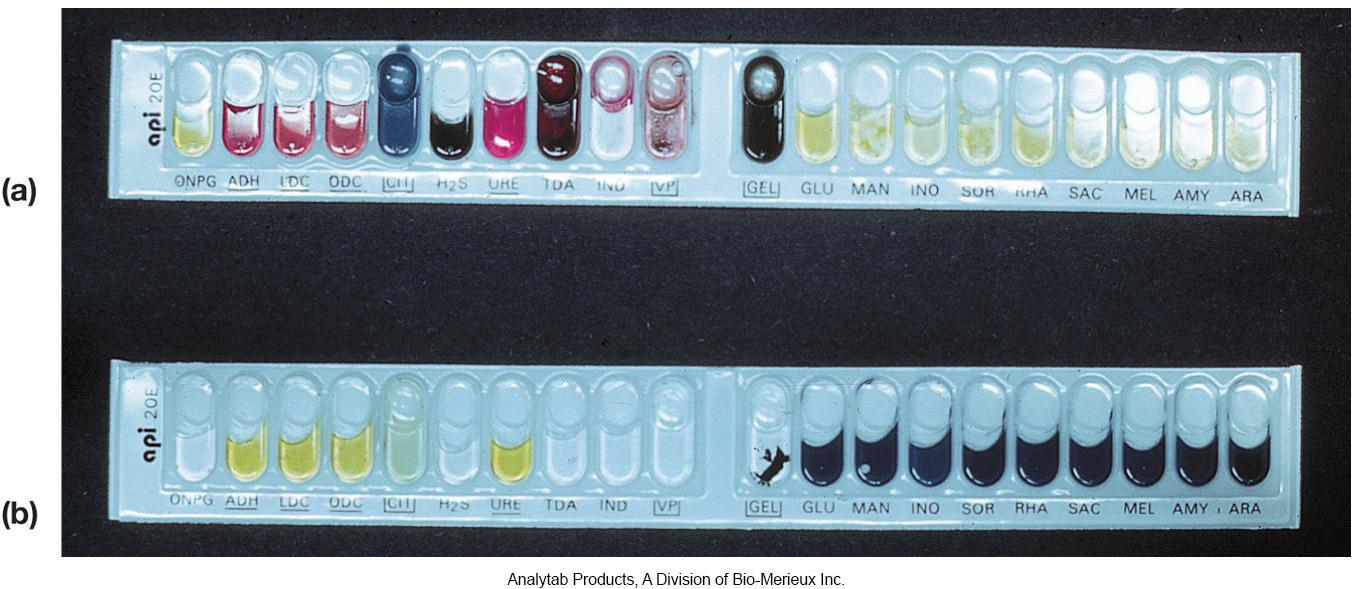
Molecular Genetic Methods
Accurate, routine used
- comparison of proteins
- nucleic acid-based detection methods
Molecular methods widely use
- nucleic acid probes; DNA hybridization
- PCR and real time PCR
- ribotyping (16S rRNA analysis)
- multilocus sequence typing (MLST)
- genomic fingerprinting
- plasmid fingerprinting
Clinical Immunology
(1) Serotyping
Use of serum antibodies to detect and identify molecules
Can be used to differentiate serovars or serotypes of microbes that differ in antigenic composition of a structure or product
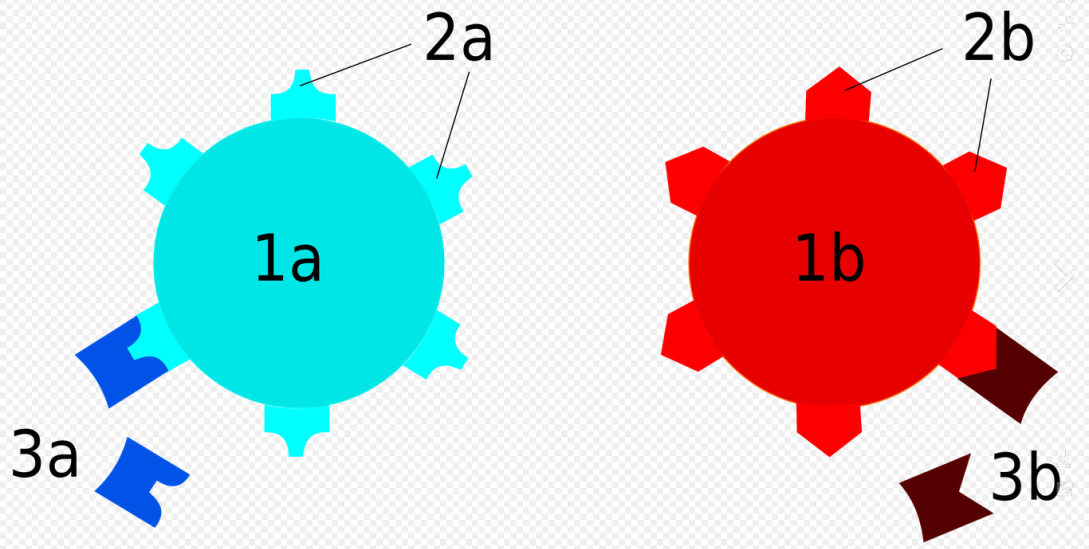
(2) Agglutination
visible clumps or aggregates of cells or particles
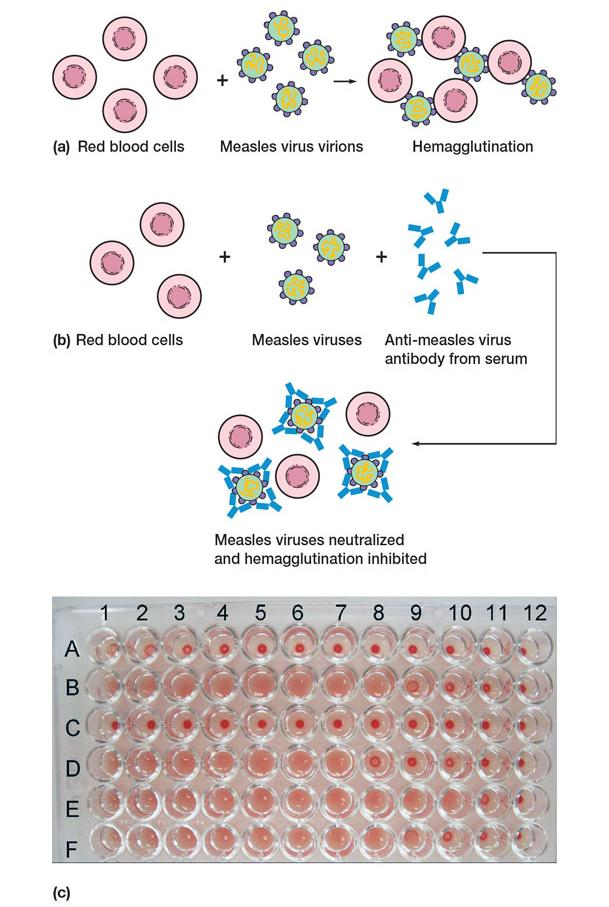
(3) Complement Fixation
Binding of complement to an antigen-antibody complex
Basis of diagnostic tests that determine if antibodies to an antigen are present in patient’s serum
Very sensitive, measure extremely small amounts of antibody
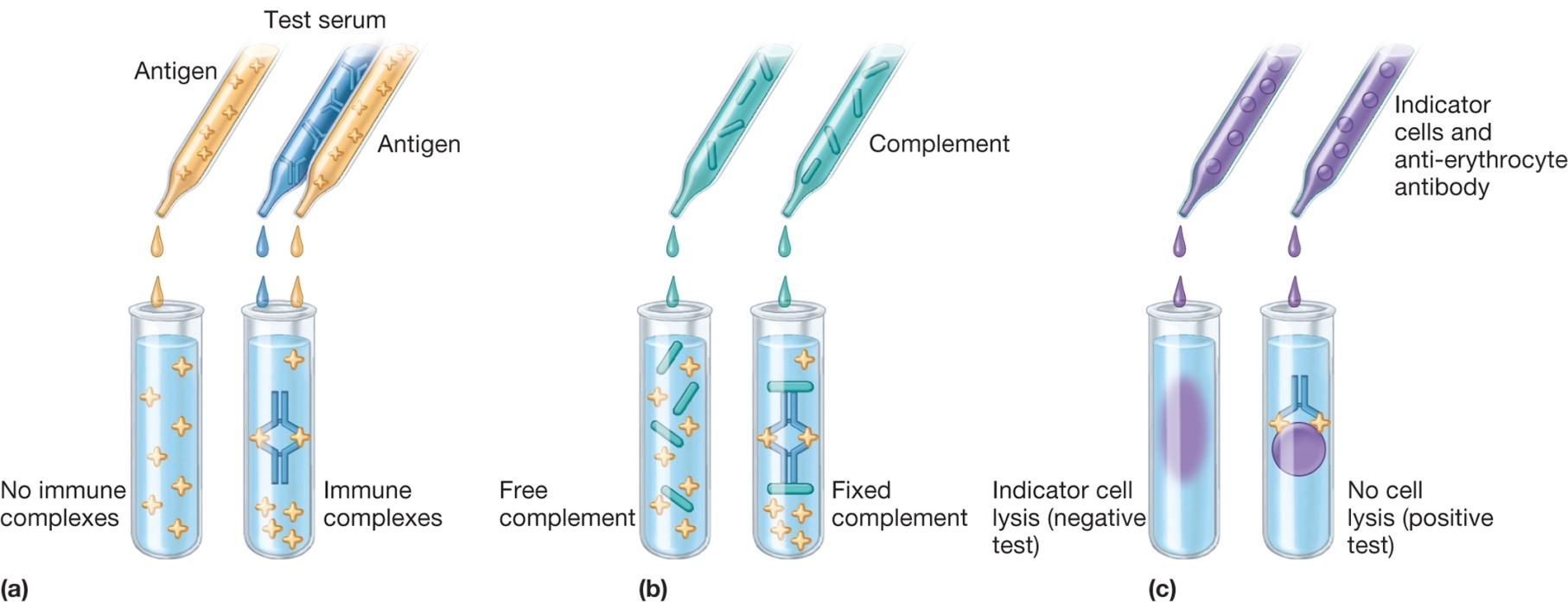
(4) Enzyme-Linked Immunosorbent Assay (ELISA)
One of the most widely used serological tests
- detect antigen and antibody
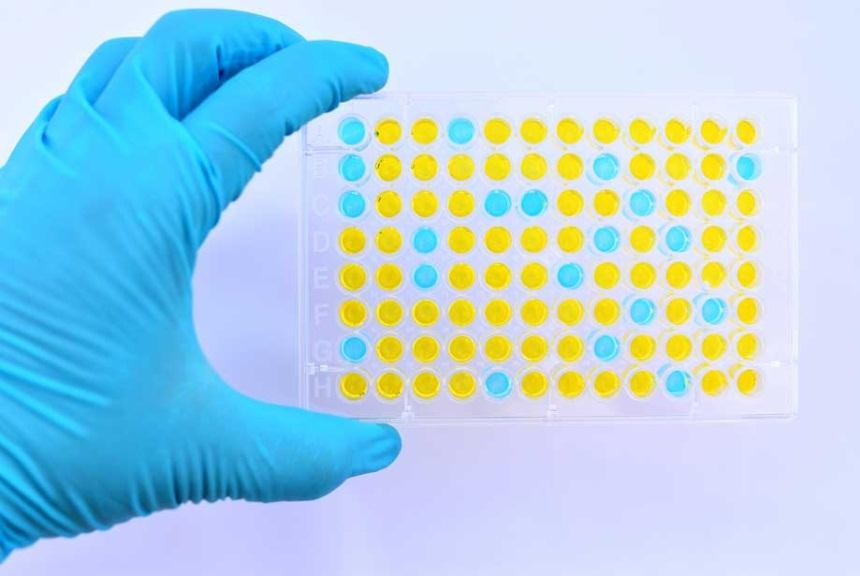
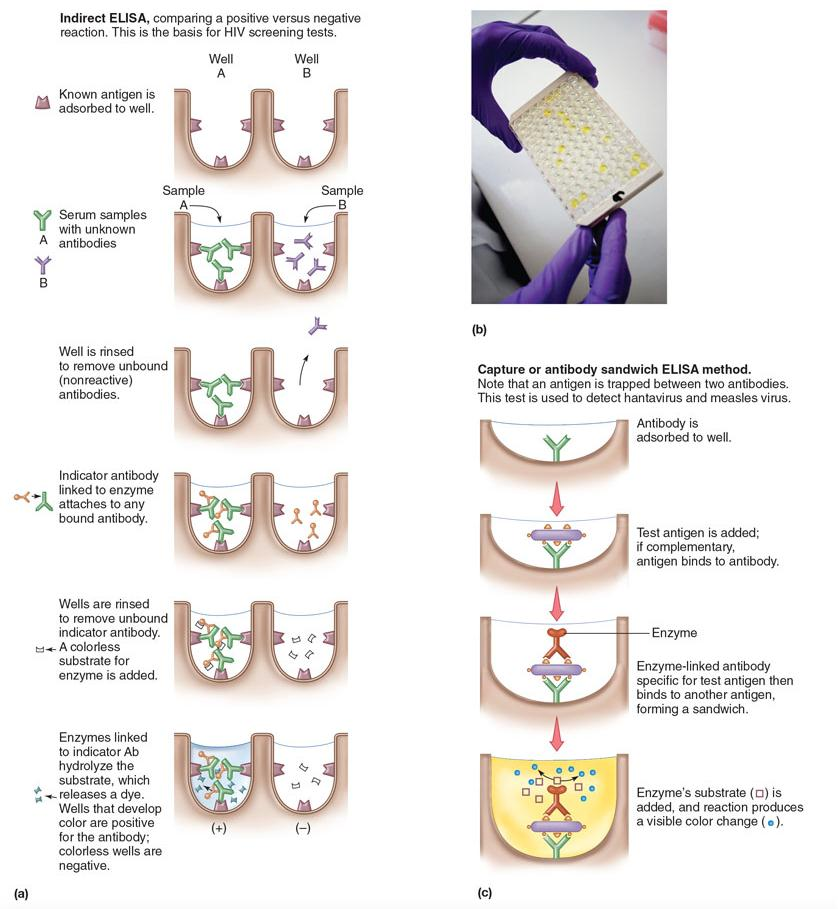
(5) Immunoblotting (Western Blotting)
Procedure
- proteins separated by electrophoresis
- transferred to membrane
- protein bands visualized withenzyme-tagged antibodies
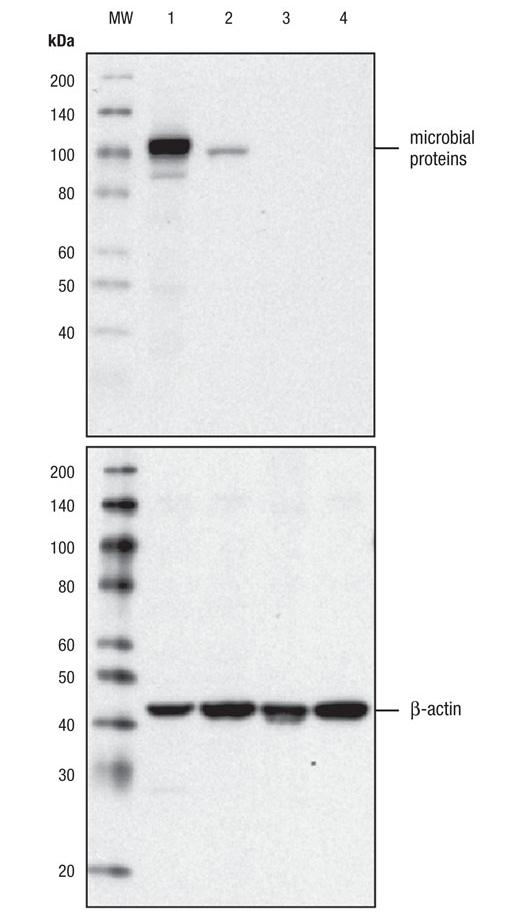
(6) Immunoprecipitation 免疫沉淀法
Detects soluble Ag reacting with Ab
Binding of Ab to Ag forms lattice that precipitates
Lattice formation occurs only in optimal ratio of Ag to Ab
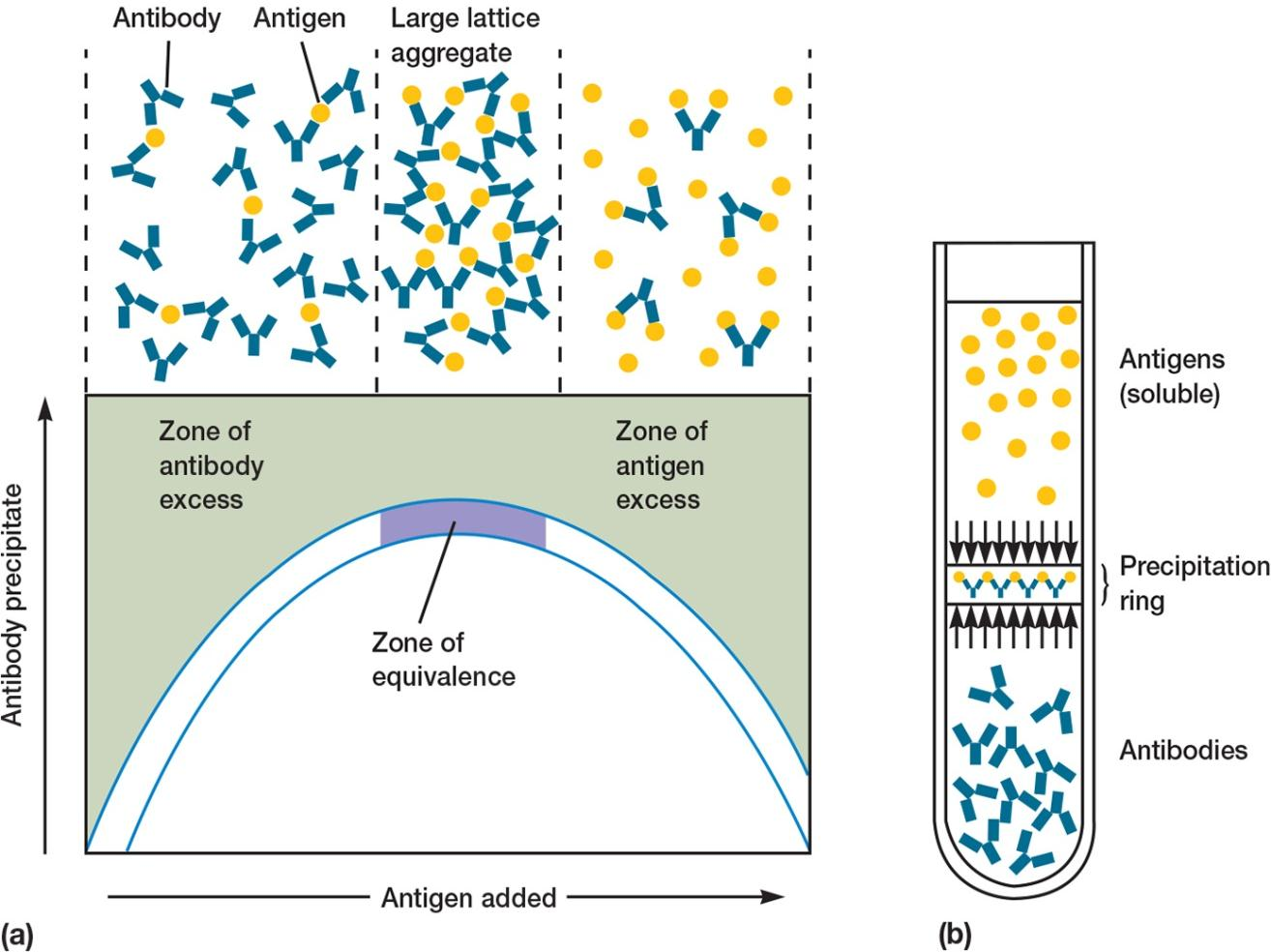
(7) Immunodiffusion 免疫扩散
Precipitation reaction that occurs in agar gel medium
Two commonly used techniques
single radial immunodiffusion (RID) assay (antibody in agar, antigen diffuses)
- quantitates antigen
double diffusion agar assay
- antibody and antigen both diffuse
- identifies antigens
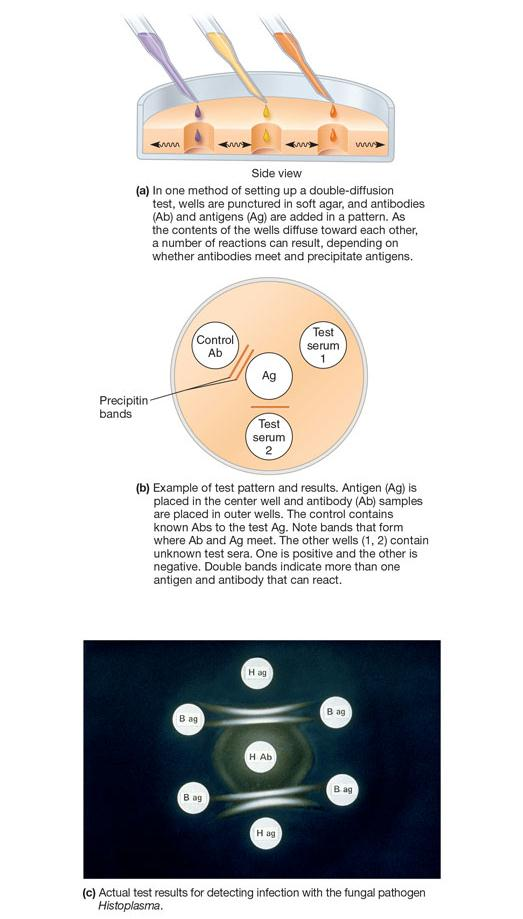
(8) Immunoelectrophoresis 免疫电泳
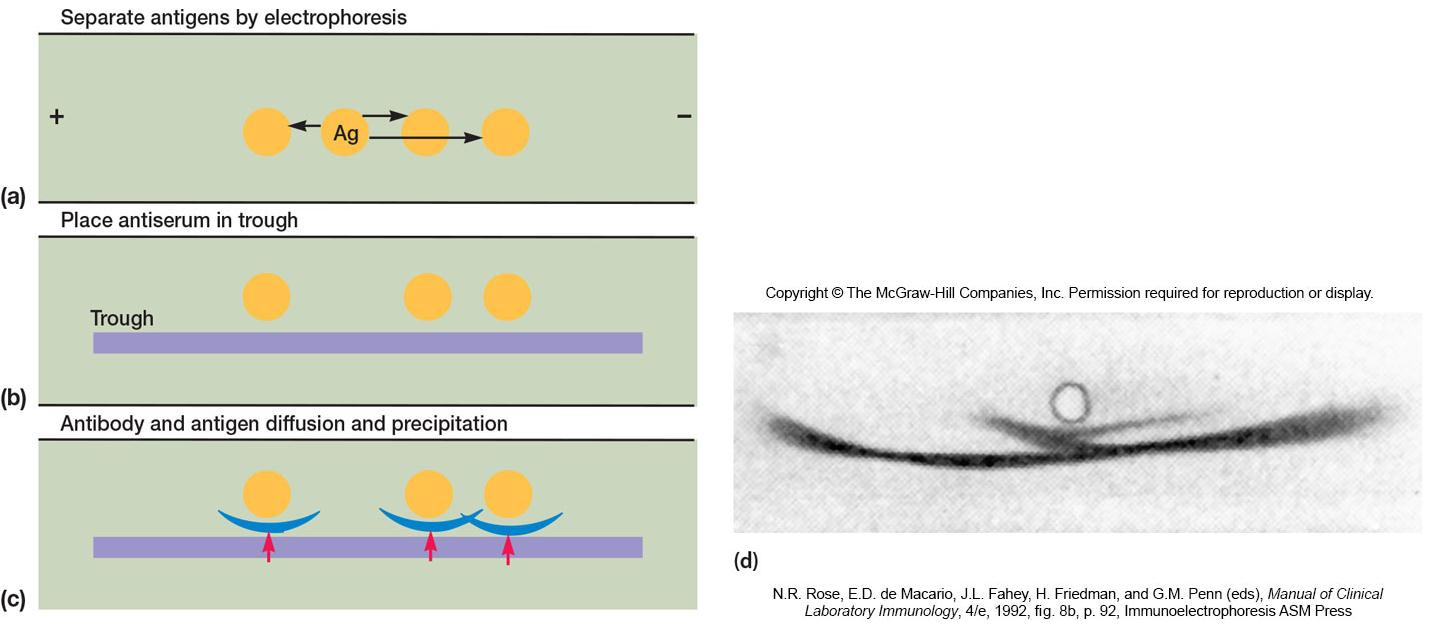
Antigens first separated by electrophoresis according to charge
Antigens visualized by precipitation reaction
Has greater resolution than immunodiffusion assays
(9) Radioimmunoassay (RIA)
Purified antigen labeled with radioisotope competes with unlabeled standard for antibody binding
Amount of radioactivity associated with antibody is measured

四、Epidemiology
Science that evaluates occurrence, determinants, distribution, and control of health and disease in a defined human population
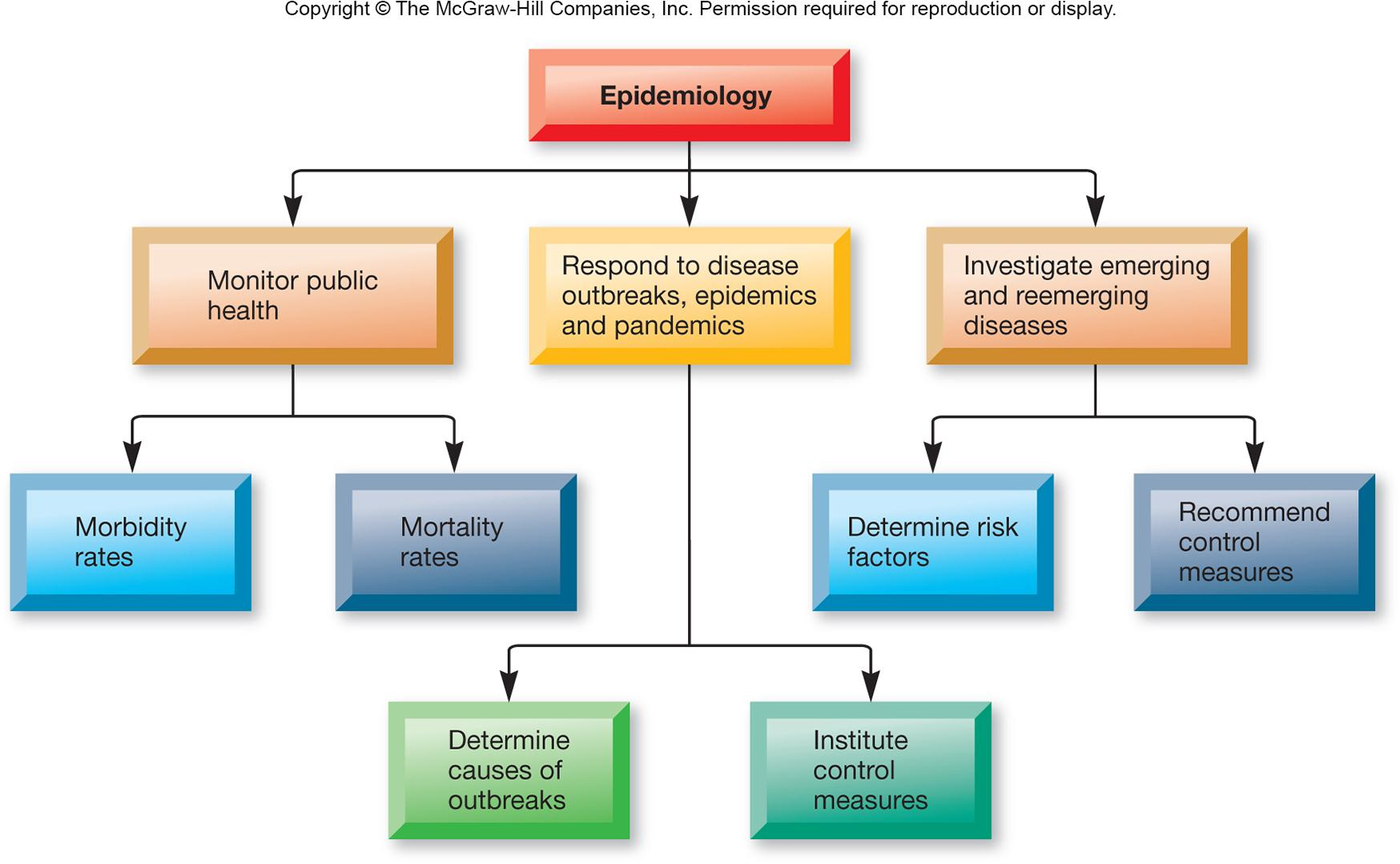
Centers for Disease Control and Prevention (CDC)
Chinese Center For Disease Control And Prevention (CDC)
Worldwide counterpart is the World Health Organization (WHO) located in Geneva, Switzerland
Epidemiology Terminology 流行病学术语
Sporadic disease 偶发病
- occurs occasionally and at irregular intervals
Endemic disease 地方性流行 Endemic (epidemiology)
- maintains a relatively steady low-level frequency at a moderately regular interval
Hyperendemic disease 高流行性疾病
- gradually increase in occurrence frequency above endemic level but not to epidemic level
Outbreak (疾病的)发作
- sudden, unexpected occurrence of disease
- usually focal or in a limited segment of population
Epidemic 流行病
- sudden increase in frequency above expected number
Pandemic 瘟疫
- increase in disease occurrence within large population over wide region (usually worldwide)
Measuring Infectious Frequency
Measure disease frequency at single time points and over time
Three important statistical measures of disease frequency
- morbidity rate
- prevalence rate
- mortality rate
Patterns of Infectious Disease in a Population
Two types of epidemics
common source epidemic
- single common contaminated source (food)
propagated epidemic
- one infected individual into a susceptible group, infection propagated to others
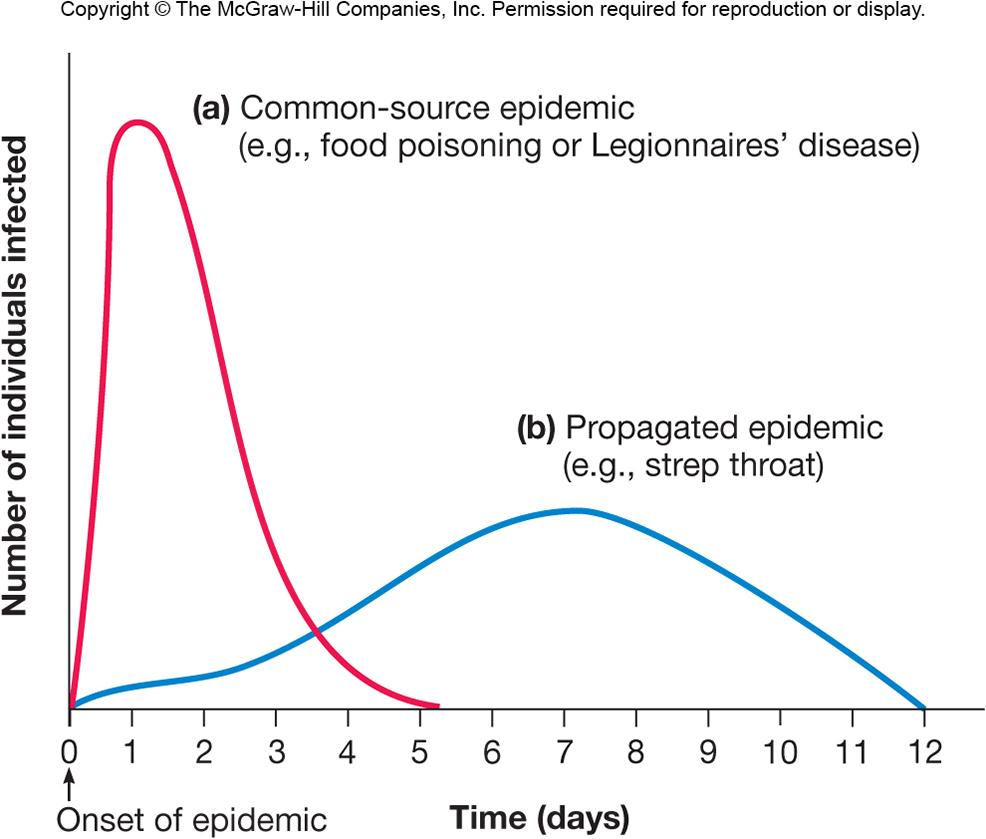
Herd Immunity
Resistance of a population to infection and to spread of an infectious organism because of the immunity of a large percentage of the population
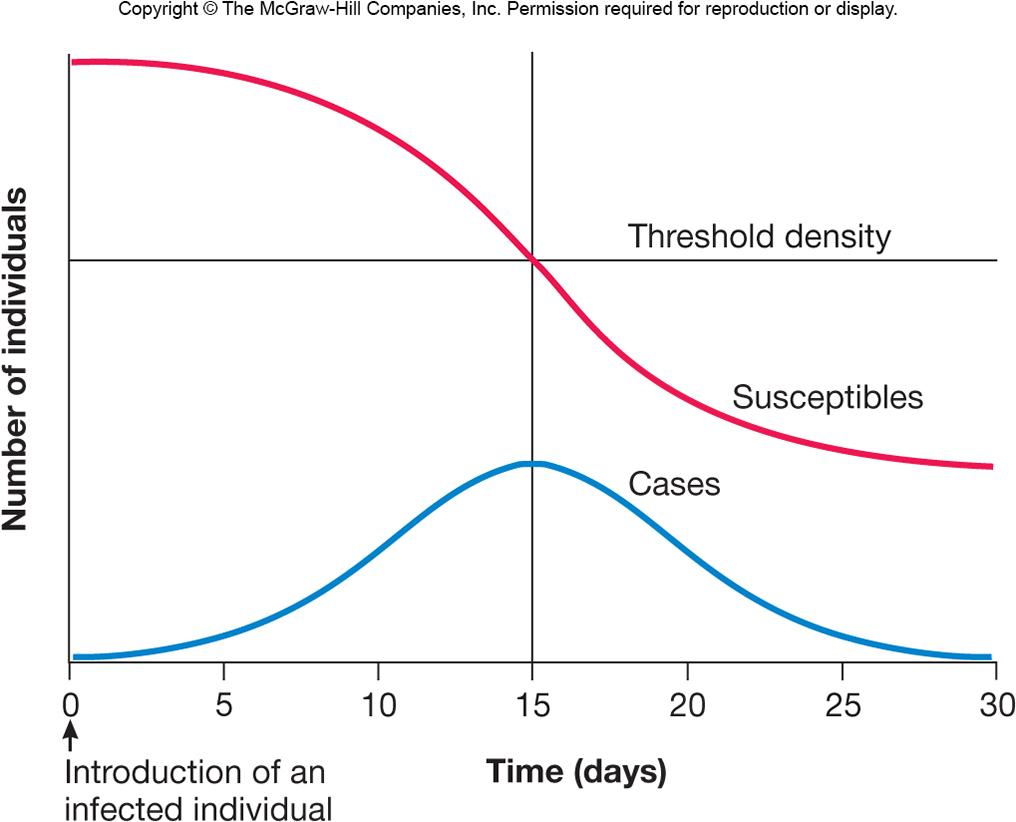
Level can be altered by changes in pathogen
antigenic drift (抗原(性)漂移) - smaller antigenic changes
antigenic shift (抗原(性)转变) - major change in antigenic character of pathogen
Prevention and Control of Epidemics
Three types of control measures
- reduce or eliminate source or reservoir of infection
- break connection between source and susceptible individual
- reduce number of susceptible individuals
1. Vaccines and Immunization
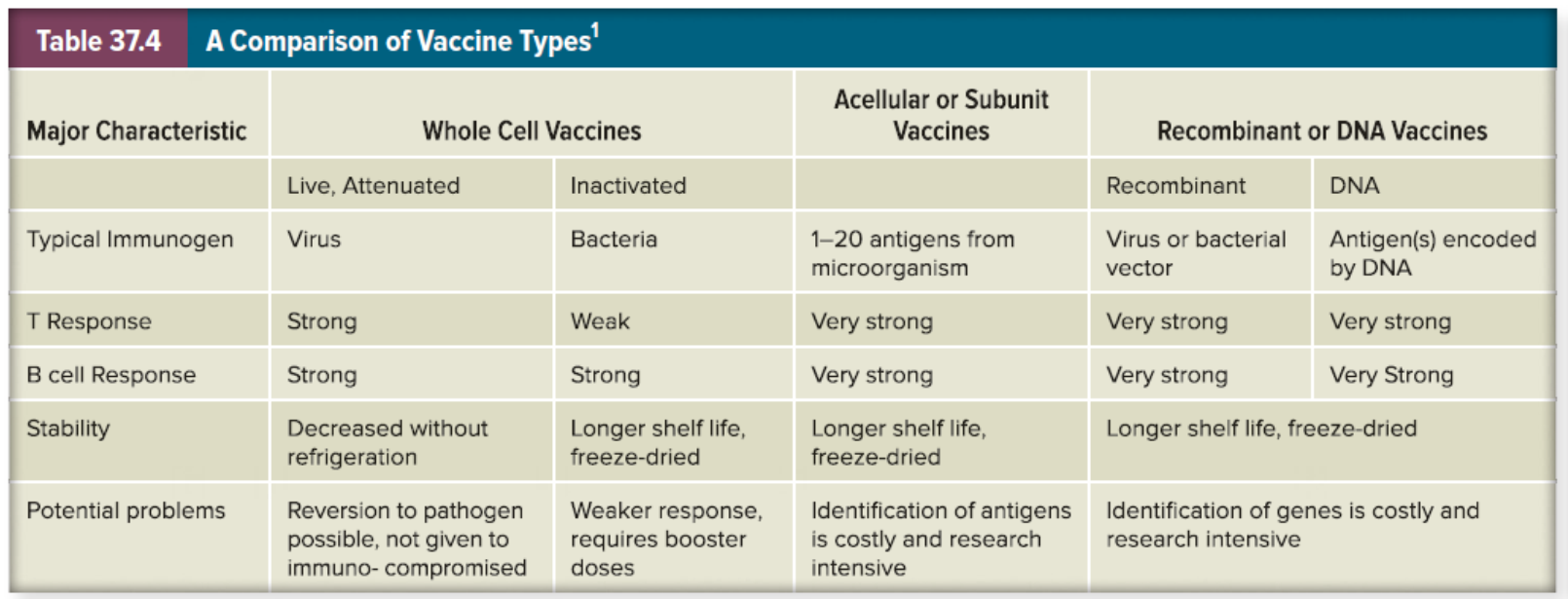
2. Adjuvants
Are mixed with antigens in vaccines to enhance the rate and degree of immunization prolongs antigen interaction with immune cells and stimulates the immune response to the antigen
